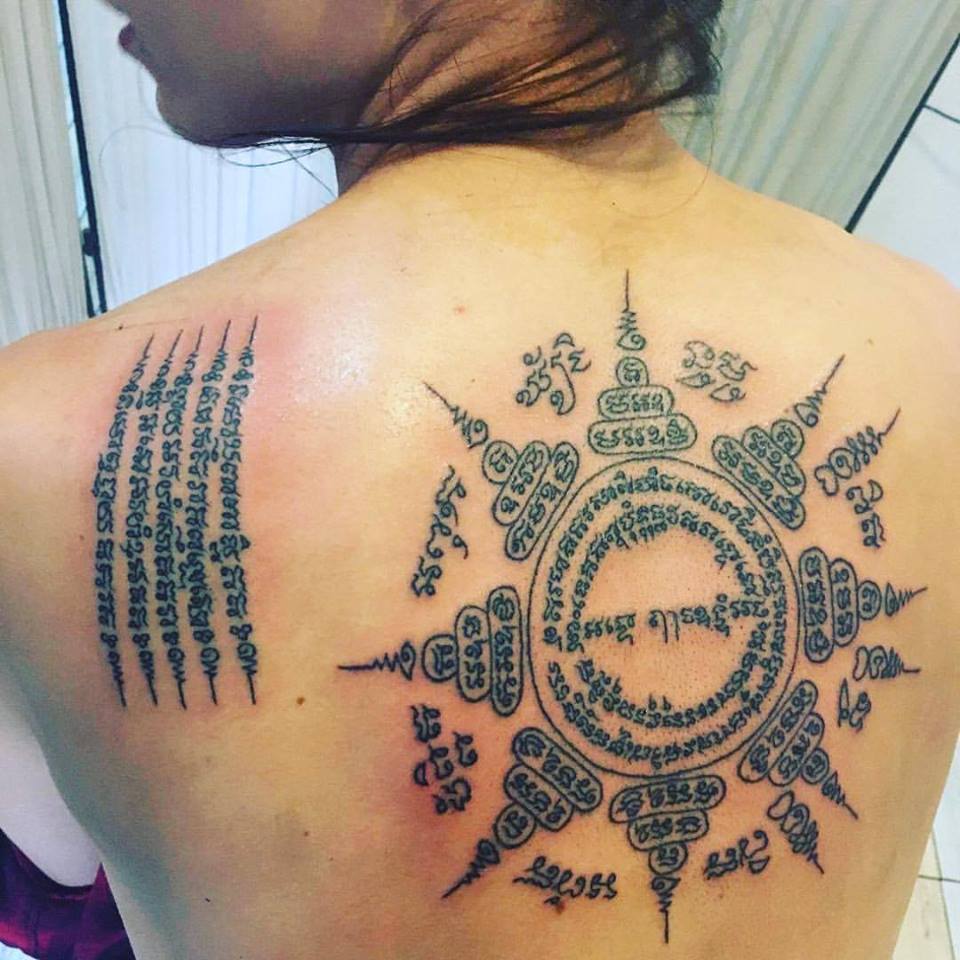It is difficult to pinpoint the exact origins of Bamboo Tattoo Art as the practice is so old the history is almost lost, being tied up with myth and legend. Many countries in South East Asia lay claim to be the birthplace of this ancient art form. However, it is generally believed to have originated in the Khmer period around 3000 years ago. There have been mummies found in the Philippines with bamboo tattoos still visible, block bands around the calf with tribal hierarchy significance.
In Thailand, bamboo tattooing began in the Buddhist temples, with monks receiving religious text tattoos from grand master monks for protection. Throughout periods of conflict in Thailand, soldiers would visit temples to be tattooed by the monks with spells for such things as protection, strength or invisibility. One Thai legend states that Thailand has never been occupied as the Thai soldiers are warrior ghosts who cannot be seen or killed by the enemy due to their protective tattoos.
In Thailand, nearly all Buddhist men become monks at some point in their lives to better understand their complex religion. During this time they are tattooed with religious texts to show the strength of their faith. Despite these deeply religious origins, tattoos are not currently mainstream in Thailand and largely seen, as historically in western culture, to be popular amongst criminals. This has only recently begun to change but nevertheless the art of bamboo tattooing is dying out with prevalence of learning to tattoo with a machine as it is easier to learn.
That said, western culture is becoming interested in bamboo tattooing with recent endorsement and publicity from Hollywood superstars such as Angelina Jolie flying to Thailand for bamboo tattoos. The actress has a traditional Khmer tattoo on her upper back and a large tiger on her lower back. Both of these have been done by bamboo and may prove an incentive for the next generation to learn bamboo tattooing before it is lost altogether.
